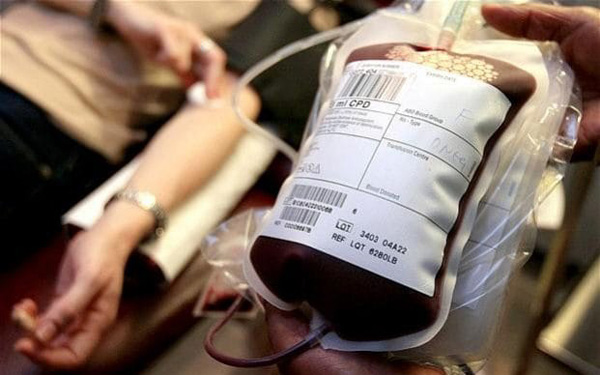
Blood donors may no longer be needed in the future after scientists showed it was possible to create blood from stem cells.
科学家们表明干细胞有望用于造血,未来可能不再需要献血者。
The 20 year project could pave the way for an unlimited number of blood and immune cells for transplants, simply by reprogramming a patient’s own skin cells.
这项研究持续了20年,为将来只需改造患者自身的皮肤细胞就可以获得移植手术所需的无限量血液和免疫细胞做好了准备。
The research, reported in the journal Nature, holds out enormous promise for developing personalised treatments for blood disorders, drug-screening and reducing shortages of donated blood.
该研究发表于《自然》期刊,在为血液疾病提供个性化治疗、药物筛选和缓解捐献血液短缺等方面具有重要意义。
Dr Ryohichi Sugimura, of Boston Children's Hospital, said: "This gives us the potential to have a limitless supply of blood stem cells and blood by taking cells from universal donors. This could potentially augment the blood supply for patients who need transfusions.
波士顿儿童医院的杉树辽一博士表示:“这为我们从万能供血者身上获取细胞来提供无限造血干细胞和血液提供了可能,有望进一步满足患者的输血要求。
“This step opens up an opportunity to take cells from patients with genetic blood disorders, use gene editing to correct their genetic defect and make functional blood cells.”
“这项进展为我们提供了机会,可以从遗传性血液病患者身上获取细胞,然后使用基因编辑技术来纠正遗传缺陷并产生功能性血细胞。”
For patients receiving treatment for cancer, blood disorders, after accidents or during surgery, or new mums who lose blood in childbirth, blood is an absolutely essential part of healthcare.
对于接受癌症治疗、血液疾病治疗、意外事故创伤治疗、接受手术的患者,或分娩时失血的母亲,血液在医疗服务中绝对是必不可少的部分。
But NHS Blood and Transplant - the service which collects, tests and processes blood for hospitals across England -says that while hospitals have the blood needed to treat patients there is a need for more new donors.
但英国国家医疗服务体系血液和移植部表示,即使医院拥有治疗患者所需的血液,仍需要更多的献血者。该部门为全英国的医院提供收集、测试和处理血液的服务。
In England the number of people becoming donors and giving blood for the first time dropped 24.4 percent in 2015 compared to 2005.
与2005年相比,英国2015年首次献血的人数下降了24.4%。
Since human embryonic stem cells were isolated in 1998, scientists have been trying with little success to use them to make blood-forming stem cells.
自1998年成功分离人类胚胎干细胞后,科学家一直在尝试使用它们来生成造血干细胞,但进展一直不大。
In the new research, the Boston team started with embryonic stem cells and exposed them to a chemical soup which triggered their transformation into a tissue which eventually makes blood stem cells.
在这项新研究中,波士顿团队首先使用胚胎干细胞,并将其暴露于化学试剂中,从而将其转化为最终能够产生血液干细胞的组织。
When the tissue was transplanted in mice, new blood cells were created in the animals.
将该组织移植到小鼠体内后,小鼠体内产生了新的血细胞。
"This work is the culmination of over 20 years of striving,” said Dr George Daley, who heads a research lab in Boston Children's Hospital's Stem Cell Program and is dean of Harvard Medical School.
波士顿儿童医院干细胞计划的研究实验室负责人乔治•达利博士说:“这项工作是二十多年努力成果的凝缩。”乔治•达利博士还是哈佛医学院的院长。
"We're tantalizingly close to generating bona fide human blood stem cells in a dish."
“离在实验室中制造出真正人类血液干细胞的目标越来越近,我们感到既心急又激动。”
Another team also writing in Nature succeeded in making blood cells using a different technique.
另一个在《自然》期刊中发表论文的研究团队使用另一种方法成功制造出血细胞。
The scientists, led by Dr Shahin Rafii, from Weill Cornell Medicine in New York City, converted cells lining blood vessels into immature blood stem cells, which then finished developing after being transplanted onto a layer of umbilical cord tissue.
由纽约市威尔康奈尔医学院的沙欣•拉非博士领导的科学家团队将血管内膜细胞转化为未成熟的血液干细胞,然后将其移植到脐带组织层上完成发育过程。
Source: 陶佳琪 & 丹妮 from language.chinadaily.com.cn

















